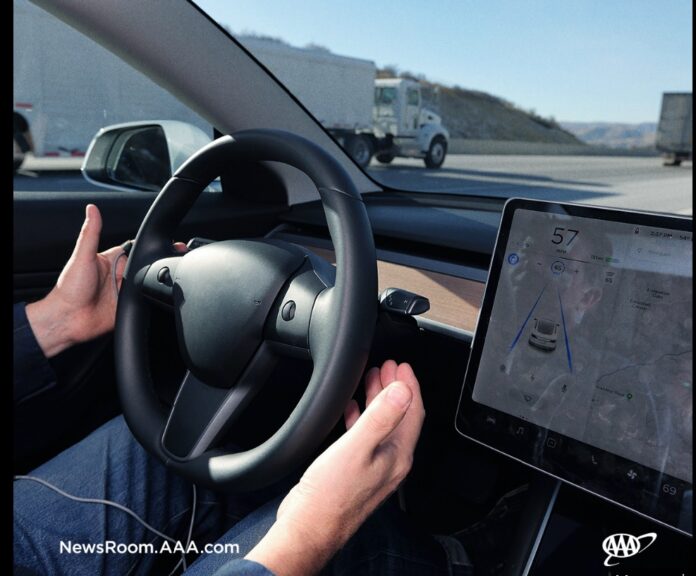Drivers using new in-vehicle technologies with names like AutoPilot or ProPilot, may believe the driving assist systems are more capable than they actually are, according to new research from the AAA Foundation for Traffic Safety.
AAA is urging automakers to err on the side of caution when it comes to naming and marketing the new technology, encouraging car dealers not to over-hype vehicle capabilities and reminding drivers that they, too, play a role in understanding the limitations of the technology and always remaining engaged when behind the wheel.
“As exciting as these new technologies may be, they are not as fully capable as some of their names might suggest,” says Morgan Dean, spokesperson for the AAA Mid-Atlantic. “It is critical that drivers understand that there are limitations and always remain engaged when behind the wheel.”
Active driving assistance systems (ADAS) combine vehicle acceleration with braking and steering. Researchers found consumer information that stresses convenience and capabilities while minimizing limitations can inflate expectations regarding what the system can do and the situations that it can handle. AAA warns that a false sense of system capabilities created by marketing campaigns can lead to dangerous scenarios on the road.
“Based on data collected from our research, subtle differences in tone and emphasis significantly influenced people’s understanding of the technology and their expectations of its capability,” said Dr. David Yang, executive director of the AAA Foundation for Traffic Safety. “These systems assist the driver and take some of the stress out of driving, but they don’t eliminate the need for drivers to pay attention.”
In this latest AAA Foundation study, 90 research participants received a brief overview of an active driving assistance system with a realistic but fictitious name. Before driving the same vehicle, half of the participants were told their system was called “AutonoDrive” and were given an upbeat training that emphasized the system’s capabilities and driver convenience.
The other half of the participants were told their system was named “DriveAssist,” and their training placed greater emphasis on the system’s limitations and driver responsibility. Participants trained on AutonoDrive came away with greater confidence — and in some cases, overconfidence — in the system.
After completing the training and driving the test vehicle, 42% of the participants using AutonoDrive, said its name made the system sound more capable than it is, while only 11% of DriveAssist users felt the same. Also, compared to those who learned about DriveAssist, participants trained on AutonoDrive were more likely to believe erroneously that the system would behave as outlined below.
Sample Perception Differences Between AutonoDrive versus DriveAssist
|
|
AutonoDrive |
DriveAssist |
| The system would make them feel more comfortable eating while driving |
65% |
27% |
| The system would make them feel more comfortable using a handheld cell phone |
45% |
13% |
| The system can take action to avoid a collision when a vehicle directly to the side begins steering into it to change lanes |
42% |
4% |
| The system can automatically reduce speed on a tight curve without the driver doing anything |
56% |
27% |

